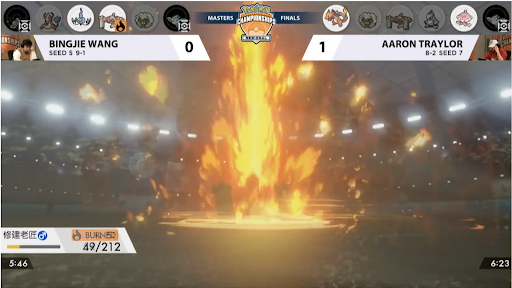
The Basics of Watching a Pokemon Match
4min 58sec read
Just want to watch, but don't know much about Pokemon? Learn enough to cheer on a friend, child, parent, or loved one.
Written by Aaron Traylor
Introduction / The Basics
If you're reading this article, you might want to watch Pokémon battles for fun without getting more involved, or because someone you know plays in these tournaments and you want to learn more about what they do. You may not have played Pokémon yourself-- you might not even know what a Pokémon is. Here are some of the basics so that you can tune into a stream and cheer-- we’ll walk you through a match from start to finish.
Pokémon
Pokémon are the creatures that the games are named after, and they use attacks on each other until they are knocked out (like a magical boxing match), as directed by the player in charge of them. In this game, the two players face each other using their Pokémon, called a “battle”. The goal of each person in a battle is to knock out all of their opponent's Pokémon. A knockout happens when a Pokémon loses all of its health and is no longer able to battle (don't worry-- they are healed later!). Usually, the player who has less Pokémon knocked out is ahead in the match.
In tournament games, players play best of three: they’ll play three battles, and whichever player wins two of them first is the winner of the match.
Team Preview
When you go to a Pokémon tournament, often you have to choose the 6 Pokémon that you’ll use at the beginning-- and you can't change them until the tournament is over. At the beginning of each battle, each person selects 4 Pokémon from their 6 Pokémon. Those 4 are the ones that they'll use for that battle. Once both players have selected their Pokémon, the battle will start.
The Field
Each player can only have two Pokémon “sent out” at a time, while the rest hang back-- these Pokémon are visible on the screen, or “on the field”. Pokémon on the field can be switched out for Pokémon “in the back”. The field is shown in the image above.
Turns
Both players will give orders to their Pokémon at the same time-- this is called a turn. Players will have a certain amount of time to think. During a turn, all Pokémon will act one after another, in an order determined by the Pokémon’s stats.
Health
Each Pokémon has a bar representing its health. When a Pokémon is at full health, this bar is full and green; when it is at low health, this bar is almost empty and red; and when it is knocked out the bar is empty and grey. This is the easiest indicator of how a battle is going-- green health bar good, red health bar bad.
Moves
Each Pokémon in a battle can take actions known as "moves"-- this is how they interact with each other. Moves for the most part "deal damage", which is the term for dropping the health of another Pokémon. Moves don't have to deal damage-- some moves heal damage instead, and some don't change health at all. There are a lot of moves, but each Pokémon can only know 4 at a time. Different Pokémon can learn different moves, which is part of why people use various Pokémon. Some moves are stronger against some Pokémon-- look out for the message "It's super effective!", which means that the move dealt bonus damage to that Pokémon, or "It's not very effective...", which means that the move dealt reduced damage.
Getting unlucky
Pokémon is a game with a lot of luck involved, and you can tell pretty easily when someone gets a little unlucky. A player or crowd will probably react to any of these events with anguish:
A critical hit! Each move has a small chance to "crit" (about 4%), which means they do bonus damage. Some moves crit more frequently, but in general, this is a rare occurrence.
"___'s attack missed!" Some moves have a small chance to miss their opponent entirely.
Freeze: Some attacks literally freeze the opposing Pokémon, making them unable to attack while frozen.
Paralysis: If a Pokémon is paralyzed, it might not move some turns.
Flinch: That Pokémon flinched and can't move this turn (some moves always flinch)
Conclusion
Once one person loses all 4 Pokémon, the game will end. For the most part, that's all you need to know to watch a game of Pokémon-- sometimes, odd stuff will happen beyond these basics, but you can roll with it. We hope you enjoy watching Pokémon battles!




